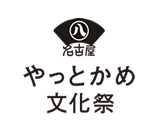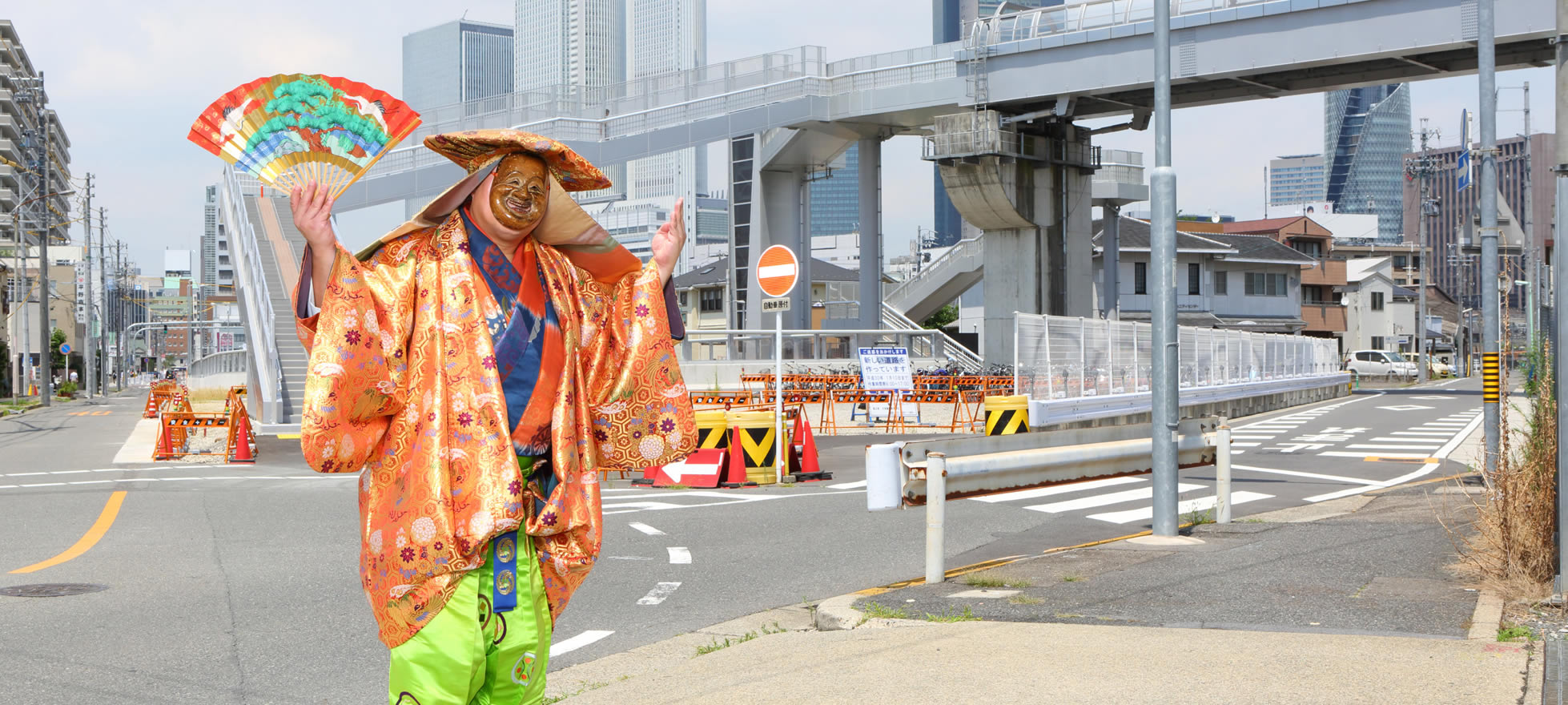
The Yattokame Festival vividly
re-tells the stories of this city.
re-tells the stories of this city.
Kyogen and other performing arts patronized
by the Owari Tokugawa thrive on.
Meanwhile, down some side alley, you can also encounter the deep culture of townspeople,
neighborhood memories quietly re-enacted and, cherished by the people,
words and tunes and ways of moving passed down through time. In humble poetry,
retained fragments of memory sing out.
Unhurriedly reaching the corners of today’s streets, these traces form bridges between
yesterday and tomorrow, they sketch scenes from the life of the city. Again, this year,
the Yattokame Festival stimulates the communion of shared memory.
This event animates stories told here and there across the city,
tales beyond space and time.
All at once, in a richly varied ever-changing tapestry of scenes, people, things,
and spaces combine to express the spirit of the city.
All over town we celebrate “The place of art, the place to visit, Nagoya.”
Come and you will enjoy playing even a small part in receiving
and transmitting the spirit of Nagoya.
by the Owari Tokugawa thrive on.
Meanwhile, down some side alley, you can also encounter the deep culture of townspeople,
neighborhood memories quietly re-enacted and, cherished by the people,
words and tunes and ways of moving passed down through time. In humble poetry,
retained fragments of memory sing out.
Unhurriedly reaching the corners of today’s streets, these traces form bridges between
yesterday and tomorrow, they sketch scenes from the life of the city. Again, this year,
the Yattokame Festival stimulates the communion of shared memory.
This event animates stories told here and there across the city,
tales beyond space and time.
All at once, in a richly varied ever-changing tapestry of scenes, people, things,
and spaces combine to express the spirit of the city.
All over town we celebrate “The place of art, the place to visit, Nagoya.”
Come and you will enjoy playing even a small part in receiving
and transmitting the spirit of Nagoya.
- Duration
- From October 28 (Sat) 2017 to November 19 (Sun)
- Venue
- Throughout the city of Nagoya
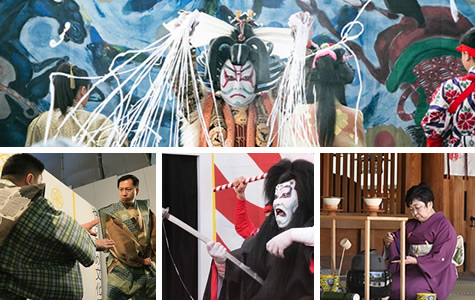
Performance In The City
From the beginning…
Much of Japan’s performing arts emerged from the bustling streets from which the performers formed a cultural community. The modern day streets still maintain that culture, and this is where this project was born. The performances in this project re-ignite the traditions!
Much of Japan’s performing arts emerged from the bustling streets from which the performers formed a cultural community. The modern day streets still maintain that culture, and this is where this project was born. The performances in this project re-ignite the traditions!
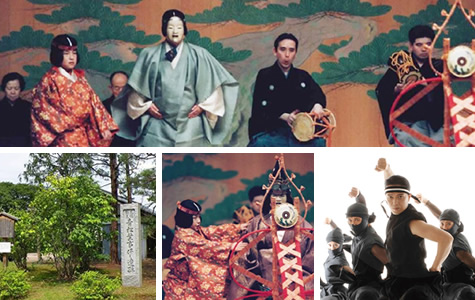
Traditional Performing Arts
The world of Japanese performing arts is very deep indeed.
The art of Noh was patronized by the ruling samurai caste, and admired by the townsfolk. Without seeing it, you cannot fully appreciate its traditional role or craft, nor can you understand the roots of this city. The world of Noh is a world beyond your wildest dreams, a world that lives on, in Nagoya City.
The art of Noh was patronized by the ruling samurai caste, and admired by the townsfolk. Without seeing it, you cannot fully appreciate its traditional role or craft, nor can you understand the roots of this city. The world of Noh is a world beyond your wildest dreams, a world that lives on, in Nagoya City.
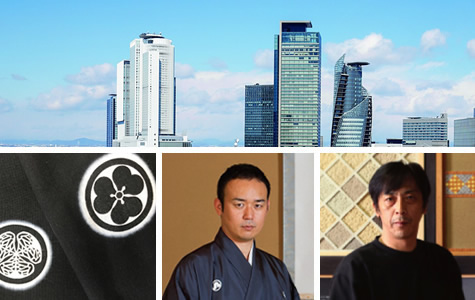
Study In The City
Introduction to “Nagoya Studies”
Follow the footprints of history through the city to discover secrets, stories and valuable cultural heritage. You’ll see the city in a different light having seen, heard, touched and experienced on this fascinating and enjoyable course.
Follow the footprints of history through the city to discover secrets, stories and valuable cultural heritage. You’ll see the city in a different light having seen, heard, touched and experienced on this fascinating and enjoyable course.
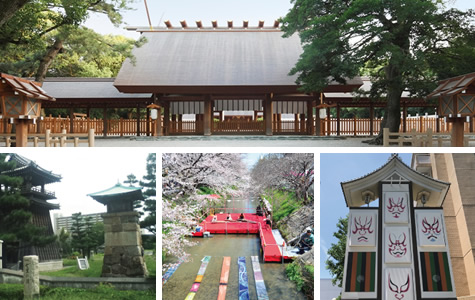
Walking Tour Nagoya
I Love Nagoya Mini Tour
On 47 well-loved strolls, you can walk with a guide who loves Nagoya. Find out how the sights you see are rooted in history and culture. Feel the thrill of discovering hidden treasure. New walks added. To little-known spots, trace the steps of historic people. It’s great fun to walk through the streets and see sights that express the deep charm of Nagoya.
On 47 well-loved strolls, you can walk with a guide who loves Nagoya. Find out how the sights you see are rooted in history and culture. Feel the thrill of discovering hidden treasure. New walks added. To little-known spots, trace the steps of historic people. It’s great fun to walk through the streets and see sights that express the deep charm of Nagoya.
- Yattokame Festival Opening Stage

Coming soon, this year the festival begins in the Sasashima Area!
Kicking off with a lively program, the launch of the cultural festival.
Kicking off with a lively program, the launch of the cultural festival.
- When
- October 28 (Sat) from 1:00pm
- Where
- Sasashima Live Nagoya Campus of Aichi University
- MC
- Rin Rin Koike, Daiki Miyata
- Program
- Street kabuki: Romeo and Juliet, Koto songs, Hirabari kiyari ondo traditional singing, Kōdan traditional storytelling,Kyogen
Tsuji Kyogen (Traditional Street Comedy Skits) ~Big Laughs in a Big City~
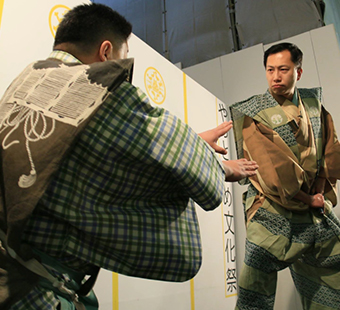
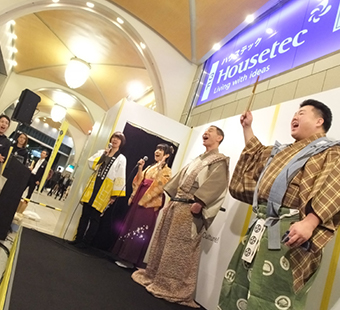
The comedy performing art of Kyogen originated in Nagoya with the formation of the Izumi Ryu performance troupe. It remains Japan's oldest remaining form of comedy performance, unchanged since the days of old. The charming characters are lovable, and deliver one great laugh after another. While Kyogen was performed in Noh theatres, Tsuji Kyogen was performed on the streets, and so returns to its roots for the Yattokame Festival.
| Schedule・Place | ||
|---|---|---|
| Oct 28 (Sat) | from 3:00 pm | Sasashima Live (Aichi University Nagoya Campus) |
| Oct 29 (Sun) | from 2:30 pm | Osu Shopping District Fureai Plaza |
| Nov 4 (Sat) | from 2:30 pm | KITTE Nagoya 1F Atrium |
| Nov 5 (Sun) | from 2:30 pm | KITTE Nagoya 1F Atrium |
| Nov 11 (Sat) | from 2:30 pm | Nagoya Castle Ninomaru Plaza |
| Nov 12 (Sun) | from 2:30 pm | Aeon Mall Atsuta |
| Nov 18 (Sat) | from 3:00 pm | Endoji Shotengai near NAGOYA za |
| Nov 19 (Sun) | from 3:00 pm | Endoji Shotengai near NAGOYA za |
- Performers
- Ito Yasushi, Inoue Soudai, Inoue Matsujiro, Imaeda Kunio, Kashima Toshihiro, Sato Tomohiko, Fujinami Toru, and others.
- Songs (provisional)
- Kagyū, Busshi, Funefuna, Kobu-uri, Boshibari, Busu, Kane-no-ne, Onigawara.
Inclement weather or other circumstances may force change of venue or cancellation.
- On the last two days of the Yattokame Festival, look out for the stand bar!
- Yattokame Bar by stand Coup!
-
On the final two days of the Yattokame Cultural Festival, sip delicious Owari sake and munch snacks from a stand bar appearing on Endōji Shōten-gai Shopping Street. Raise a glass at the finale of the cultural festival!
“stand Coup!” events turn everyday street corners into party space for easy socializing. The project makes city locations momentarily more memorable as places.
When:October 18 (Sat) – 19 (Sun) 12:00–5:00pm
Where:Endōji Shōtengai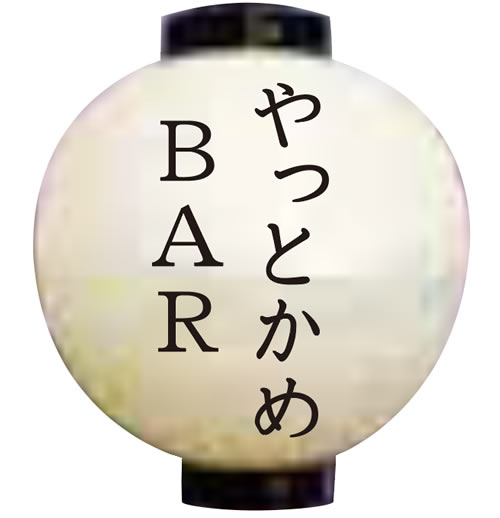
Shakespeare × Shōyō × Street kabuki Romeo and Juliet
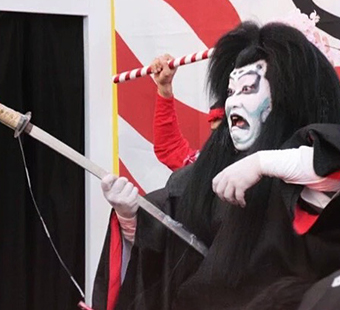
Photo for illustrative purposes only
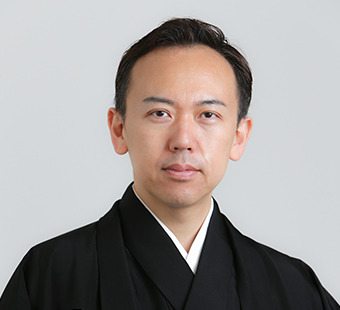
Kazumasa Nishikawa
(Fourth Head of Nishikawa School of Nihon Buyō)
(Fourth Head of Nishikawa School of Nihon Buyō)
Critic and novelist Shōyō Tsubouchi, who spent his formative years in Nagoya,* translated all of Shakespeare’s plays. In Japanese and performed as kabuki, Romeo and Juliet again proves how the Bard’s tale of young love transcends time and place. In streets awash with spilled blood, witness a city feud!
*In 1859, Shōyō Tsubouchi was born in Gifu Minokamo. After the Meiji Restoration, he moved to Nagoya and attended the Aichi Foreign Language School (now Aichi Prefectural Asahigaoka High School). Besides advocating realism in his critical work Essence of the Novel, he published the novel Portraits of Contemporary Students, and singlehandedly reworked a number of Shakespeare plays, such as Julius Caesar into Jiyūno-tachi Nagori no Kireaji a colorful work of jōruri-style narrative singing.
| Schedule・Place | ||
|---|---|---|
| Oct 28 (Sat) | from 1:00 pm | Sasashima Live (Aichi University Nagoya Campus) |
| Nov 4 (Sat) | from 1:00 pm | KITTE Nagoya 1F Atrium |
| Nov 12 (Sun) | from 1:00 pm | Aeon Mall Atsuta |
| Nov 19 (Sun) | from 1:30 pm | Endoji Shotengai near NAGOYA za |
- Performers
- Sōken Kudō (Head of Kudō School of Nihon Buyō), Kirk Nishikawa Dixon (Bekkaku Shihan Nishikawa School of Nihon Buyō)
- Scenario and direction
- Kazumasa Nishikawa (Head of Nishikawa School of Nihon Buyō)
Inclement weather or other circumstances may force change of venue or cancellation.
Shinoryu-Kodo meets Beatles by Keiko Lee
Journey through Life Evoked by Scents and Sounds
Third Concert in Collaboration with the Shino School of Kōdō
Third Concert in Collaboration with the Shino School of Kōdō
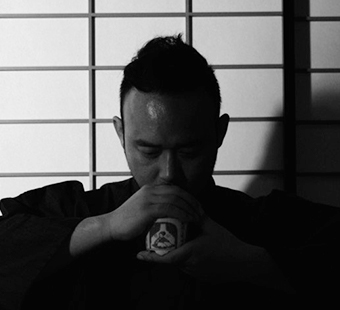
“Life” is the theme of the Third Concert in Collaboration with the Shino School of Kōdō. This time we welcome jazz singer Keiko Lee to sing some songs of the Beatles. At significant points in nearly everyone’s life, somewhere, there has been a Beatles song playing. Filling the venue with fragrant overlapping evocations of the past, the head of the Shino School of Kōdō will release successive scents during the Beatles songs. Please enjoy a sensual concert that harmoniously blends scent and sound.
- Performers
- Shino School of Kōdō 21st Successor Sōhitsu Hachiya, Keiko Lee
Please refrain from applying scent or perfume before or during the concert.
Uraku-style tea ceremony returns to Nagoya Castle
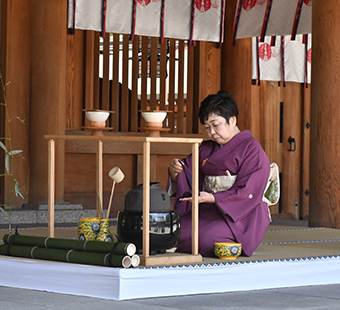
Photo courtesy of Kashihara Jingū Shrine
The Uraku tea ceremony follows the style established by Oda Urakusai, the younger brother of Nobunaga Oda. It was formerly known as the Oie style. While the tea ceremony as developed by commoners such as the Sen family has a gentle character, Uraku-style and other samurai tea ceremonies are marked by a certain tension. Uraku-style ceremonies were preferred in the Owari Tokugawa castle of Nagoya.
Finally, to commemorate the first such ceremony held in Nagoya Castle for 100 years, at the Yattokame Cultural Festival, a Uraku-style tea ceremony will be presided over by the iemoto successor to the lineage established by originator Oda Urakusai. This is also a special opportunity to observe heirloom tea utensils familiar to the Oda family.
- Time
- Oct 28 (Sat)
① 9:30 am〜 ②10:30 am〜 ③11:30 am〜 ④1:30 pm〜 ⑤2:30 pm〜 - Venue
- Nagoya Castle cha-seki
- Fee
- 3,000 yen
Host:Uraku School of Tea 17th successor Sōyū Oda
Shōnen Ōjakan Drama Jinkō Ren’ai Sōkyokusen [Trajectory of Artificial Love]
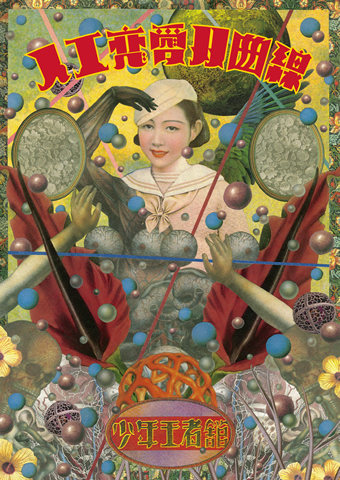
Boiling down ingredients from the more than a hundred stories written by Aichi-born novelist Fuboku Kosakai, this performance cans a thick mishmash of spleen and heart, sleuths, phantoms, and deceptions, perpetrators and other selves, retinas, coincidence and swoons, mistakes, the moon and blood, pussies and poetry, science and the malevolent dog spirit, missteps and awakenings, hypnosis, suspects and players, surgery, flagons of sake, loot and threatening letters, alibis, kisses and conflict, getaways and lock ups, Ōsu, reticence, Nagoya, laughing out loud, dread and jewelry, all blended into a delicious, intriguing stew.
Shōnen Ōjakan
As Gekidan Shōnen Ōja, this troupe first arrived on the scene in March 1982 with a production of Gekkō Empō Tsūshin at Nagoya Nanatsuji-dera Kyōdo Studio. In 1985, it was renamed Shōnen Ōjakan. Since then, it has staged numerous shows in Japan’s three major cities, Nagoya, Osaka, and Tokyo. Evocative productions make use of images and sounds, and are said to present a view of life from the side of death. The scripts contain much word play, and geometric dance routines worked up by the members. These and other traits set Shōnen Ōjakan apart and account for its lasting onstage popularity.
|
Nov 2(Thu) from 7:30 pm Nov 3(Fri) from 7:30 pm Nov 4(Sat) from 2:00 pm / from 7:30 pm Nov 5(Sun) from 2:00 pm / from 7:30 pm Nov 6(Mon) from 2:00 pm★/ from 7:30 pm Nov 7(Tue) from 7:30 pm Nov 8(Wed) from 2:00 pm ★…Post-performance discussion by Tengai Amano of Shōnen Ōjakan & Professor Shoko Komatsu of Kinjō Gakuin University |
|---|---|
| Venue | Nanatsudera Kyodo Studio |
| Fee | 3,000 yen / Student:2,000 yen |
- Performers
- Tamami, Yūchin, Ari Miyari, Ryō Ikeda, Sonoko Iwamoto, Kō Imura |
echo, et al. - Planning assistance
- Shoko Komatsu, Professor, Literature Faculty,
Kinjō Gakuin University - Production assistance
- Konno Budō
(under the auspices of Contondo)
Doors open 30 minutes before start.
Please refrain from bringing preschool children to the event.
Please refrain from bringing preschool children to the event.
Fuboku Kosakai
Lived from 1890 to 1929. Born in Kanie in Aichi Prefecture.
After attending Aichi Daiichi Prefectural Middle School (now Asahigaoka High School), he was admitted to the medical faculty of The University of Tokyo and proceeded to post-grad studies in serology and physiology. In 1917, he became Associate Professor at Tohoku University School of Medicine and was able to study overseas in Europe and America. After developing pulmonary tuberculosis, however, he returned to Japan. Since he was well-versed in forensic medicine and fond of foreign detective stories, he contributed critical essays to Shinseinen, a popular magazine for educated urban young people. His more creative output included Cursed House, Curved Romance, Artificial Heart, and other ambitious medical crime novels. He is also credited with pushing for the inclusion of The Two-Sen Copper Coin, the debut publication of Edogawa Ranpo who, after the death of Kosakai, compiled his complete works and had them published by Kaizō-sha.
Lived from 1890 to 1929. Born in Kanie in Aichi Prefecture.
After attending Aichi Daiichi Prefectural Middle School (now Asahigaoka High School), he was admitted to the medical faculty of The University of Tokyo and proceeded to post-grad studies in serology and physiology. In 1917, he became Associate Professor at Tohoku University School of Medicine and was able to study overseas in Europe and America. After developing pulmonary tuberculosis, however, he returned to Japan. Since he was well-versed in forensic medicine and fond of foreign detective stories, he contributed critical essays to Shinseinen, a popular magazine for educated urban young people. His more creative output included Cursed House, Curved Romance, Artificial Heart, and other ambitious medical crime novels. He is also credited with pushing for the inclusion of The Two-Sen Copper Coin, the debut publication of Edogawa Ranpo who, after the death of Kosakai, compiled his complete works and had them published by Kaizō-sha.
Scenario and direction
Tengai Amano
Born 1960 in Ichinomiya, Aichi Prefecture.
After he formed the forerunner to Shōnen Ōjakan in 1982, based in Nagoya, the troupe performed all over Japan. Known mainly for his prolific stage output across a range of genres, he has also produced cartoons, designs, and essays. Released in 1994, his short film Twilight received Grand Prix awards at both the Oberhausen International Short Film Festival and the Melbourne International Film Festival. His many other honors include a Nagoya Theater Pen Club Award and the Aichi Prefecture Arts and Culture Commendation Prize.
Tengai Amano
Born 1960 in Ichinomiya, Aichi Prefecture.
After he formed the forerunner to Shōnen Ōjakan in 1982, based in Nagoya, the troupe performed all over Japan. Known mainly for his prolific stage output across a range of genres, he has also produced cartoons, designs, and essays. Released in 1994, his short film Twilight received Grand Prix awards at both the Oberhausen International Short Film Festival and the Melbourne International Film Festival. His many other honors include a Nagoya Theater Pen Club Award and the Aichi Prefecture Arts and Culture Commendation Prize.
Time Garden The End, or Beginning
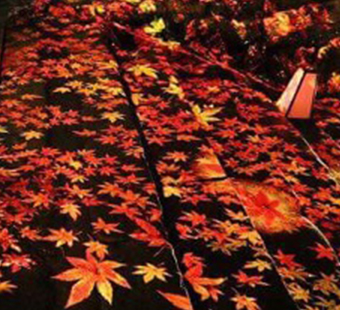
View free of charge
Silent scenery woven by shadows and light.
Waiting for the moon, led by the sighing breeze.
At rest and in motion. Virtual and actual. Recalled and reincarnated.
Rippling fluctuations, the start of the end, a traveler’s tale.
Waiting for the moon, led by the sighing breeze.
At rest and in motion. Virtual and actual. Recalled and reincarnated.
Rippling fluctuations, the start of the end, a traveler’s tale.
Cut-out light artist
Atsumi Sakai
Born in Aichi Prefecture. She works to create original expressions of light in what she calls “cut-out light images” and has been successfully producing and presenting these works. These include One Picture, Two Surprises, where one cut-out can alternately show two scenes, and Outdoor Magic Lantern, which projects cut-out images on streets and natural surroundings.
Atsumi Sakai
Born in Aichi Prefecture. She works to create original expressions of light in what she calls “cut-out light images” and has been successfully producing and presenting these works. These include One Picture, Two Surprises, where one cut-out can alternately show two scenes, and Outdoor Magic Lantern, which projects cut-out images on streets and natural surroundings.
Satsuma-biwa
Tomoyoshi Kakushin
Born in Asakusa, Tokyo. Continuing the artistic lineage inherited from his grandfather, he began learning various traditional arts from childhood onwards, including studying Satsuma biwa with Kinshi Tsuruta. Honors include a Minister for Education, Culture, Sports, Science and Technology Award, and the NHK President's Award. Consultation for NHK historical dramas is one of his many wide-ranging activities. He is Tourism Ambassador for Taito Ward and a Lecturer at Nihon University College of Arts Music Department.
Tomoyoshi Kakushin
Born in Asakusa, Tokyo. Continuing the artistic lineage inherited from his grandfather, he began learning various traditional arts from childhood onwards, including studying Satsuma biwa with Kinshi Tsuruta. Honors include a Minister for Education, Culture, Sports, Science and Technology Award, and the NHK President's Award. Consultation for NHK historical dramas is one of his many wide-ranging activities. He is Tourism Ambassador for Taito Ward and a Lecturer at Nihon University College of Arts Music Department.
Nihon Buyō
Kazumasa Nishikawa
Born the eldest son of Ukon Nishikawa, the Third Head of the Nishikawa School of Nihon Buyō. He made his stage debut at six and was recognized as a master at age 15. In 2014 he succeeded as Fourth Head of the Nishikawa School of Nihon Buyō. Activities include producer in the Nippon Domannaka Matsuri Festival team, an executive role in Princess Samurai of Japan: Aichi Sengoku Himetai, and executive producer of the 2016 National Cultural Festival.
Kazumasa Nishikawa
Born the eldest son of Ukon Nishikawa, the Third Head of the Nishikawa School of Nihon Buyō. He made his stage debut at six and was recognized as a master at age 15. In 2014 he succeeded as Fourth Head of the Nishikawa School of Nihon Buyō. Activities include producer in the Nippon Domannaka Matsuri Festival team, an executive role in Princess Samurai of Japan: Aichi Sengoku Himetai, and executive producer of the 2016 National Cultural Festival.
- When
- November 15 (Wed)
Cut-out light images 5:30–7:30 pm; Satsuma biwa and dance 6:30 pm onwards - Where
- Hakurinji Temple precincts (3-25-18 Sakae, Naka-ku, Nagoya)
- Cost
- No charge
Inclement weather or other circumstances may force change of venue or cancellation.
Parlor live Cooperation: Nagoya Mebaeka
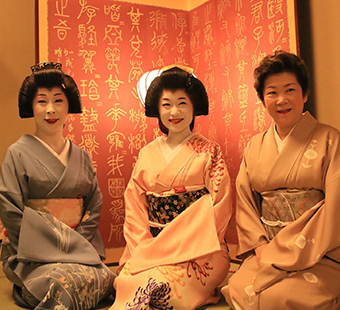
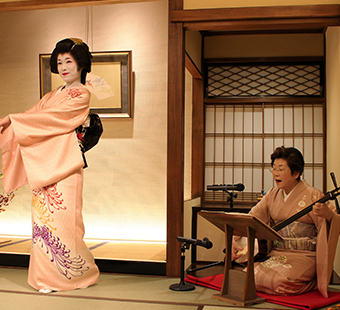
In historic surroundings, enjoy scrumptious meals and heartful hospitality. The convivial welcome extends to traditional parlor games, the art of making fun when the liquor has flowed. This is the kind of pleasure you can only enjoy at the Yattokame Cultural Festival.
Doors open 30 minutes before the scheduled start. Be aware that no admissions are allowed until then.
Kodan
Pcord:636-660
- Date
- Oct 28 (Sat)
- Time
- from 6:30 pm
- Place
- Tsutamo (3-9-27 Sakae, Naka-ku)
- Cast
- Kyokudou Fu-Rin (Mizutani Mimi), Kyokudou Rin-Rin
- Price
- ¥13,000
Parlor games
Pcord:636-661
- Date
- Oct 29 (Sun)
- Time
- from 6:30 pm
- Place
- Kamome (4-85 Shirakabe, Higashi-ku,)
- Cast
- Meigiren Kumiai (premier Nagoya geisha federation)
- Price
- ¥13,000
Tsutomu & Koito & Hikono
Pcord:636-662
- Date
- Nov 3 (Fri)
- Time
- from 11:30 am
- Place
- Kawayoshi (2-10-6 Izumi, Higashi-ku)
- Cast
- Tsutomu Tanaka, Meigiren Kumiai (premier Nagoya geisha federation), Koito, Hikono
- Price
- ¥8,000
Parlor games
Pcord:636-663
- Date
- Nov 3 (Fri)
- Time
- from 6:30 pm
- Place
- Koraku (3-3 Chikara, Higashi-ku)
- Cast
- Meigiren Kumiai (premier Nagoya geisha federation)
- Price
- ¥13,000
Parlor songs
Pcord:636-664
- Date
- Nov 4 (Sat)
- Time
- from 11:30 am
- Place
- Kantora (3-22-12 Nishiki, Naka-ku)
- Cast
- Zuiuta Hanafusa ryu Hana no kai, Hanabusa masako, Hanabusa komasa
- Price
- ¥8,000
Parlor games
Pcord:636-674
- Date
- Nov 18 (Sat)
- Time
- from 6:30 pm
- Place
- Shiratama (2-36 Kamiiida Nishimachi, Kita-ku)
- Cast
- Meigiren Kumiai (premier Nagoya geisha federation)
- Price
- ¥13,000
Enjoy noh, a drink, and entering the spirit of warlords.
Share drink and noh beloved by warlords
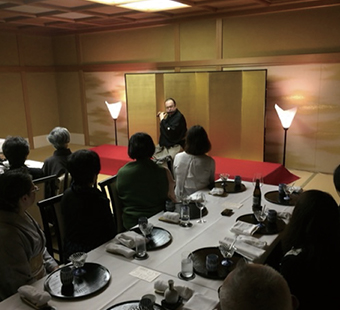
Nagoya is known both for its many wine lovers and its thriving noh culture. Noh and liquor associations have, for the first time brought these together in a hotel venue at the Yattokame Cultural Festival. Featuring instruments and voices, the Noh flute composition Three Warlords and Noh is by Rokurobyōe Fujita, Head of Fujita School of Noh Flute. Meanwhile, based on the conjecture of senior sommelier Ryō Nasu, guests are offered the kind of wine, served in earthenware, that Nobunaga Oda originally drank in Japan. On this magical night, in a historical romance eased by noh music, food, and drink, exploring the links between noh and sake, enjoy slipping back in time.
- When
- November 12 (Sun) 6:30 pm onwards (doors open 6:00 pm)
- Where
- Seiun, 2F The Westin Nagoya Castle (3-19 Hinokuchi-chō Nishi-ku, Nagoya)
- Cost
- 14,000 yen (includes noh performance, meal, sake, and wine)
- Performers
- Noh flute, Rokurobyōe Fujita, 11th Successor of Fujita School of Noh Flute; Kanze School shite lead actor Akira Yoshizawa; Le Martin Pêcheur owner and sommelier Ryō Nasu
- Cooperation
- The Westin Nagoya Castle, Nakanihon Sobi Co., Ltd.
Nagoya song Experience Nagoya through song
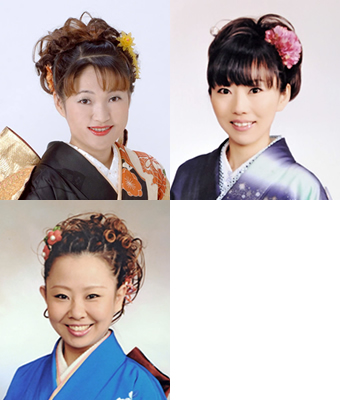
View free of charge
During the feudal period, the influence of songs from Nagoya was undoubtedly transmitted all over Japan. Nagoya is known as a center of dexterity and craft. Through the skill of the performers become more familiar with the city.
| Schedule・Place | ||
|---|---|---|
| Nov 4 (Sat) | from 1:30 pm | KITTE Nagoya 1F Atrium |
| Nov 5 (Sun) | from 2:00 pm | KITTE Nagoya 1F Atrium |
Ha-uta Modish Edo pop songs
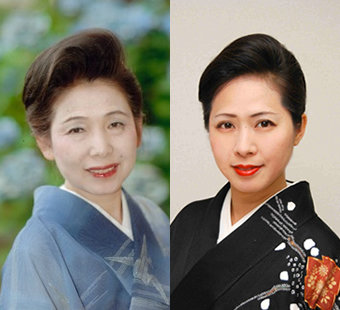
View free of charge
Popular songs that people hummed on feudal streets. Imagine how, in the shadow of the castle, the streets were alive with song.
| Schedule・Place | ||
|---|---|---|
| Oct 29 (Sun) | from 2:00 pm | Osu Shopping District Fureai Plaza |
| Nov12 (Sun) | from 2:00 pm | Aeon Mall Atsuta |
Tsutomu & Koito & Hikono
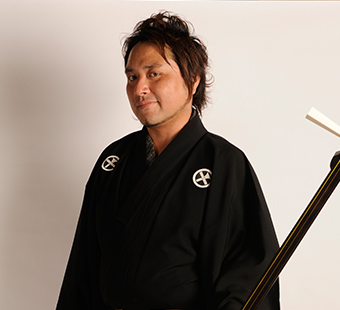
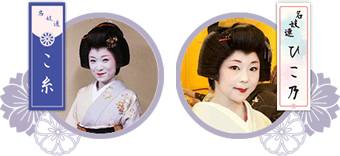
View free of charge
A special unit formed only for the cultural festival. Whatever will come out of it?! It’s bound to be fun!
| Schedule・Place | ||
|---|---|---|
| Nov 5 (Sun) | from 1:00 pm | KITTE Nagoya 1F Atrium |
Parlor tricks Nagoya’s signature Golden Shachihoko
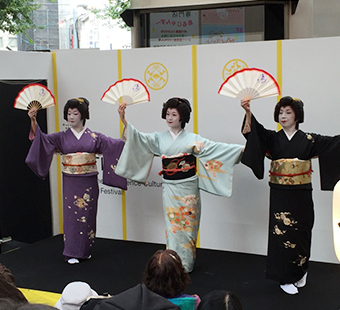
View free of charge
Street-corner tricks and illusions were a town tradition. Enjoy the Nagoya speciality, Golden Shachihoko, involving the “killer whale” roof decorations of Nagoya Castle.
| Schedule・Place | ||
|---|---|---|
| Nov 11 (Sat) | from 1:30 pm | Nagoya Castle Ninomaru Plaza |
| Nov 19 (Sun) | from 2:30 pm | Endoji Shotengai near NAGOYA za |
Owari manzai Roots in Owari of give and take of comedic duos
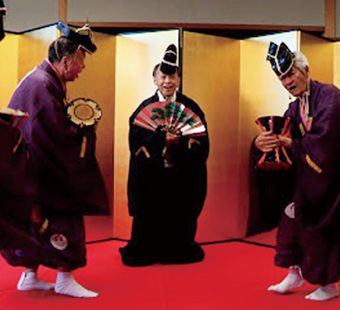
View free of charge
Choboji Temple was opened by esteemed monk Muju Kokushi. The way he delivered instruction, intoning in a distinctive, rhythmic fashion, has become a time-honored mode of preaching. It is also designated a national important intangible folk culture asset.
| Schedule・Place | ||
|---|---|---|
| Nov 4 (Sat) | from 2:00 pm | KITTE Nagoya 1F Atrium |
Oharu Taiko Drumming
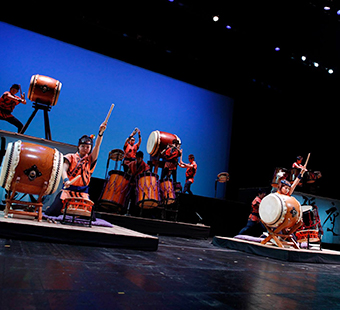
View free of charge
Experience kagura drumming as practiced at Shinto festivals in farming communities in Owari. It’s fascinating to watch brilliant drummers beat faster than the eye can see.
| Schedule・Place | ||
|---|---|---|
| Oct 29 (Sun) | from 1:00 pm | Osu Shopping District Fureai Plaza |
| Nov 18 (Sat) | from 1:00 pm | Endoji Shotengai near NAGOYA za |
Rakugo and storytelling Holding an audience, Nagoya style
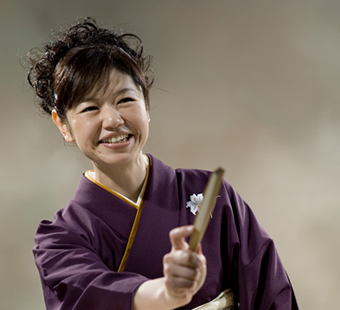
View free of charge
This traditional style attracted an audience and entertainingly held attention. Enjoy the charm of the telling of each tale.
Kyokudo Rinrin
| Schedule・Place | ||
|---|---|---|
| Oct 28 (Sat) | from 2:00 pm | Sasashima Live (Aichi University Nagoya Campus) |
| Nov 11 (Sat) | from 2:00 pm | Nagoya Castle Ninomaru Plaza |
| Nov 18 (Sat) | from 1:30 pm | Endoji Shotengai near NAGOYA za |
Kaminarimon Chicago
| Schedule・Place | ||
|---|---|---|
| Nov 13 (Mon) | from 1:30 pm | Aeon Yagoto 4F |
Shōjō (Narumi-chō)

View free of charge
Legend has it that an animal that likes liquor lives in the southern part of Nagoya. It seems that even if struck hard by large hands it does not get hurt.
| Schedule・Place | ||
|---|---|---|
| Nov 19 (Sun) | -- | Endoji Shotengai near NAGOYA za |
Shachihoko Challenge Project
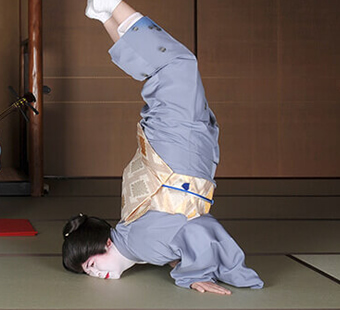
In Nagoya Castle, be changed by Golden Shachihoko movement workshop!
This is the second edition of last year’s hit project. Through practice of Nihon buyo dance moves, learn elegant Japanese movement and demeanor. Wearing a kimono in Nagoya Castle, you can show off your new skills. You can also attempt a Golden Shachihoko Performance, a requisite skill for top geisha in Nagoya!
| Schedule・Place | ||
|---|---|---|
| Nov 11 (Sat) | from 12:00 pm | Nagoya Castle Ninomaru Square |
The world of storytelling by women
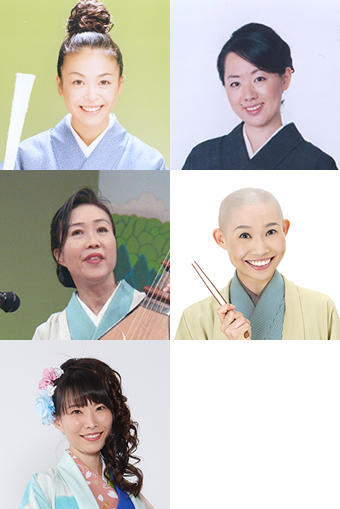
Since feudal times, Ōsu has flourished as a temple town bustling with worshippers visiting the Kannon. It became a vibrant place of theaters and smaller halls. Drawing on the town culture of the Edo period, a performance has been organized to generate vitality for the future and to get across why the citizens of those times had such an appetite for verbal entertainment, including rakugo and kōdan storytelling. Come feel the buzz and enjoy the unfolding narratives of female performers at the Ōsu Engeijō Theater, the only such venue in Tokai.
- Performer
- Kōdan storytelling , Paper cut-outs , Rakugo
- MC
- Odai-no-Kata (Princess Samurai of Japan Aichi Sengoku Himetai)
- Date
- Oct 29 (Sun) 3:00 pm (doors open 2:30 pm)
- Venue
- Osu Engeijo Theater
- Admission
- Regular:3,000 yen / Student:1,500 yen (all seating unreserved)
Please refrain from bringing preschool children to the event.
Kage Damashii (Deceptive Shadows)
Tokugawa Ieyasu and Ninja – Hattori Hanzō Masanari – Hidden history
Tokugawa Ieyasu and Ninja – Hattori Hanzō Masanari – Hidden history
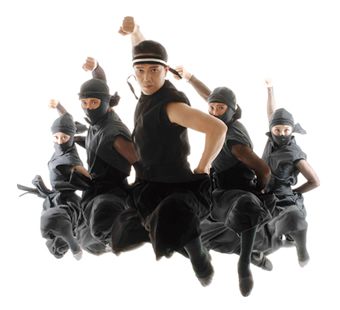
Combining martial arts with jazz dance, ballet, and acrobatics, the widely active M. Mishiro Dance Company explores the theme “Japanese Spirit with Western Knowledge.” The show interweaves scenes of village life with the story of Ieyasu and Hanzo, who shared the joys and hardships of childhood.
If a ninja falls, no comrade will come to retrieve the corpse. Incognito, the ninja lived in the shadows. Only Hattori Hanzō Masanari, that so-called “Demon Hanzō” left a trace on history. Born at the same time as Ieyasu in Okazaki, Hanzō was the second son of lineage founder Hattori Hanzo Yasunaga, who had left Iga to serve the Tokugawa family in their third generation of struggle to hold Mikawa. From early childhood, Hanzō knew Ieyasu, who was then called Takechiyo. For 55 years he led a shadowy life devoted to his lord.
- Date
- Nov. 5 from 2:00 pm (doors open 1:30 pm)
- Venue
- Artpia Hall
- Admission
- 3,000 yen (student 1,500 yen) (all seating unreserved)
Please do not bring preschool children.
The Time When Even a Demon Wept
When Ieyasu’s eldest son and heir, Nobuyasu, the lord of Okazaki Castle, was suspected of conspiracy by Nobunaga, Ieyasu ordered him to commit seppuku. Hanzō was charged by Ieyasu to act as second and deliver the coup de grace. Hanzō wept as he did his duty. Thus, in Japanese, the phrase, “even demons weep” is still in current use.
Hanzō was tough and able to endure. People who can withstand hardship always play a major role in the world.
Special period drama. Adapted from Honda Tadakatsu’s “Howling winter wind, a woman makes the sound: A secret story of Nagoya Castle.”
Blue Scatter – A tale of Nagoya Doishita
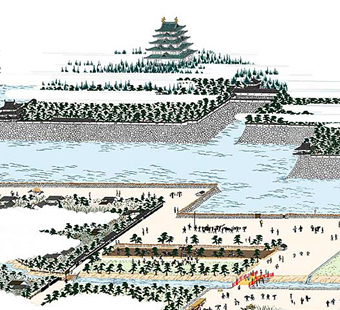
Script: Honda Tadakatsu
Director and Artistic Director: Takashi Ōtake
Director and Artistic Director: Takashi Ōtake
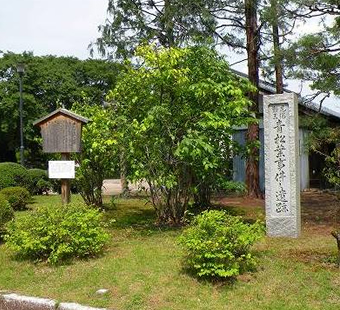
Aomatsuba Incident Monument (in Nagoya Castle Ninomaru)
The Aomatsuba Incident occurred in 1868. In the aftermath of the imperial restoration in Kyoto, the pro-Tokugawa faction in the Owari clan was repressed. Yoshikatsu, the 14th heir of the Owari Tokugawa was said to have received an imperial edict to suppress dissent, but the truth is unclear. Many people were punished, including 14 who were beheaded and others who had their family names expunged.
The Aomatsuba Incident occurred in 1868. In the aftermath of the imperial restoration in Kyoto, the pro-Tokugawa faction in the Owari clan was repressed. Yoshikatsu, the 14th heir of the Owari Tokugawa was said to have received an imperial edict to suppress dissent, but the truth is unclear. Many people were punished, including 14 who were beheaded and others who had their family names expunged.
Towards the end of the Tokugawa Shogunate, there is a secret story from Owari about people who played an undercover role in history. In late 1867, the momentous Declaration of Imperial Rule was issued. Yoshikatsu the 14th heir of the Owari Tokugawa was in Kyoto and found himself in a difficult situation, caught between the new regime, championed by the Satsuma and Chōshū clans, and the shogunate. Even though the Owari Tokugawa had been loyal through the generations since Yoshinao founded the line, as the most senior of the three branch families of the Tokugawa, the current lord could not afford to offend the new government. Internally, the clan was divided, with the Kintetsu faction supporting the emperor and the Fuigo faction remaining loyal to the shogun. Advocates from either side, including young people, clamored in Meirin-dō, the clan school, fervently arguing the issues. One such youth, Tamon Irie was a family member of Osoba-gumi, a covert group that for 260 years, should the castle be threatened, had been charged with a secret mission. Shin’emon Watanabe, aka Aomatsuba, a senior member of the Fuigo faction exceeded his authority to prevent violence from erupting between the factions. Early in the following year, the shogun’s army clashed with forces of the imperial faction at Toba Fushimi. Defeated, Shogun Yoshinobu fled to his capital at Edo and imperial enforcement troops were dispatched from Kyoto. Yoshikatsu hurried to Owari to smooth the transition before the enforcement troops arrived. Thinking that the time had come to fulfill their secret duty, members of the Osoba-gumi grew increasingly excited. Their lord, Yoshikatsu halted, however, at Kiyosu, immediately before Nagoya. Did Aomatsuba have a hand in this?
- Date
-
Nov 11 (Sat) ①1:30 pm ②6:30 pm
Nov 12 (Sun) ①1:30 pm - Venue
- Higashi Bunka Sho-gekijo
- Admission
- Regular:3,000 yen / Student:1,500 yen
Please do not bring preschool children.
Trance Noh: Fluctuation 1/f
Insane world lit by candlelight
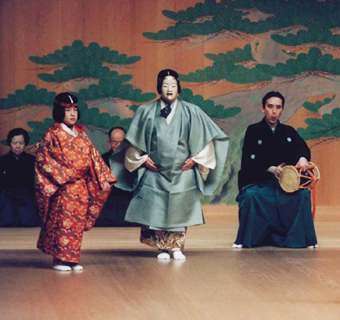
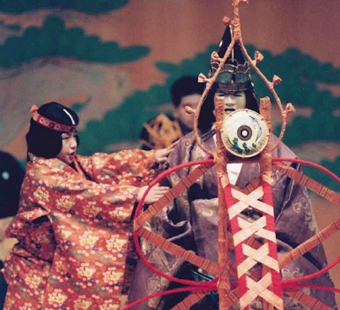
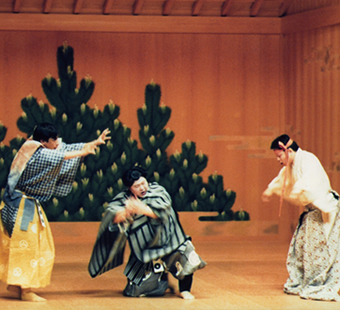
Natural phenomena such as the flickering of a candle, the babbling of a brook, the winking of dappled sunlight, and the blinking light of fireflies are said to have a healing effect. In each, elements vary with a frequency of 1/f. In Trans Noh: Fluctuation 1/f, conjured in the flickering light of candles, in the shadows and light of the noh stage, you will witness apparitions and malevolent specters, entities beyond our human sphere. In a magical space, give yourself over to the ghostly world of trance, a world where insubstantial spirits possess people.
- Date
- Nov. 18 from 2:00 pm (doors open 1:30 pm)
- Venue
- Nagoya Nogakudo
- Admission
- 3,000 yen (student 1,500 yen) (all seating unreserved)
Please do not bring preschool children.
Noh
Fuji, a drummer from Sumiyoshi Taisha Shrine is killed by Asama of Tennōji, who covets the duty of beating the taiko drum at the Imperial Palace. Suspecting her husband was murdered, Fuji’s widow puts on her husband’s performance costume, whereupon she loses her mind. She insists that the taiko murdered her husband and calls on her daughter to help her beat it. At that point, she is possessed by her husband’s ghost. With this demented wife fixated on the murdering taiko and possessed by her husband’s spirit which, clinging to the taiko, animates her to continue drumming, and all this expressed in a dance in which she appears to beat the drum as an act of vengeance, the work is full of theatrical ingenuity that displays the most engaging aspects of noh.
Noh performance Guide Rent-free for a wireless headset(Japanese/English)
Earphone Guide
Commentary available on free-loan wireless headsets (Japanese & English)
Earphone Guide
Commentary available on free-loan wireless headsets (Japanese & English)
Kyōgen The Owl and the Mountain Monk
Shite lead actor: Tomohiko Satō (Izumi School of Noh)
Shite lead actor: Tomohiko Satō (Izumi School of Noh)
An eldest son has a sick brother. He knows a mountain monk and asks him if he can effect a cure. The mountain monk starts dramatic incantations to rid the patient of the possession causing his sickness. The younger brother, clad in a white garment and wearing a red headband stares strangely into space. Then, looking at the monk, he hoots out a strange sound. “It was an owl that possessed my brother.” It is hilariously funny to witness the tough spirit of the owl remaining in possession and the ineffective bogus spells fervently chanted by the mountain monk. The laughter is infectious. Kyōgen is often tinged with a touch of horror and it is a form that everyone, from children to adults, can enjoy.
Culture Tour Imprint Stamp Collection
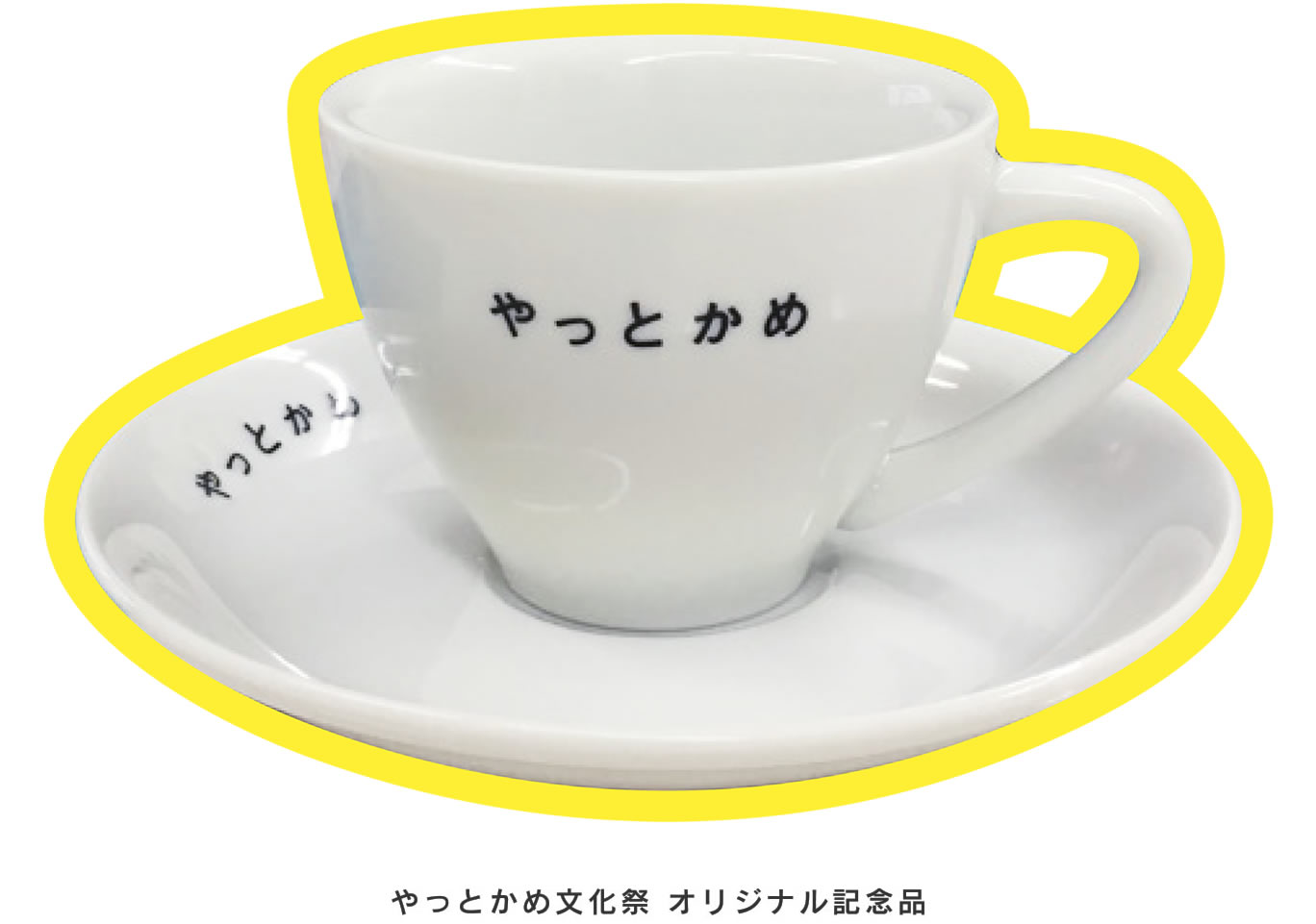

Planning assistance: Tenshindō Kojima Inbō
Each time you participate in an event, to mark the occasion, get your booklet stamped.
There are many imprints to remind you of omokage and artistic events, and the best of the town. Start your collection!
If you get a certain number of stamps, you will qualify to receive a supersize imprint and a special original festival souvenir.
Trace the steps of your journey, commemorate what you have learned. Above all, have fun along the way!
- Period
- October 28 (Sat.) to November 19 (Sun.)
- Locations
-
• All venues of Geidokoro Machinaka Hiro, Geidokoro Nagoya Butai, Machinaka Terakoya, Machiaruki Nagoya, and all special planning locations
• All 21 shops participating in “So Nagoya! Tour of Japanese confectionery shops”
• Stamps are not available at venues of events organized by UNESCO Design City Nagoya Planning or collaborative projects.
• Paper for imprints is available at each participating location.
• Souvenir gifts for qualifying collectors can be claimed only at the stage of Geidokoro Machinaka Hiro.
(Imprints are not available at the following events: Concert in Collaboration with the Shino School of Kōdō, Uraku-style tea ceremony, Jinkō Ren’ai Sōkyokusen performance, Share a drink and noh beloved by warlords dinner show, Parlor live events, Time Garden, or on the day that the Shachihoko Challenge Project is announced.)
• Paper for imprints is available at each participating location.
• Souvenir gifts for qualifying collectors can be claimed only at the stage of Geidokoro Machinaka Hiro.
(Imprints are not available at the following events: Concert in Collaboration with the Shino School of Kōdō, Uraku-style tea ceremony, Jinkō Ren’ai Sōkyokusen performance, Share a drink and noh beloved by warlords dinner show, Parlor live events, Time Garden, or on the day that the Shachihoko Challenge Project is announced.)
So Nagoya! Tour of Japanese confectionery shops
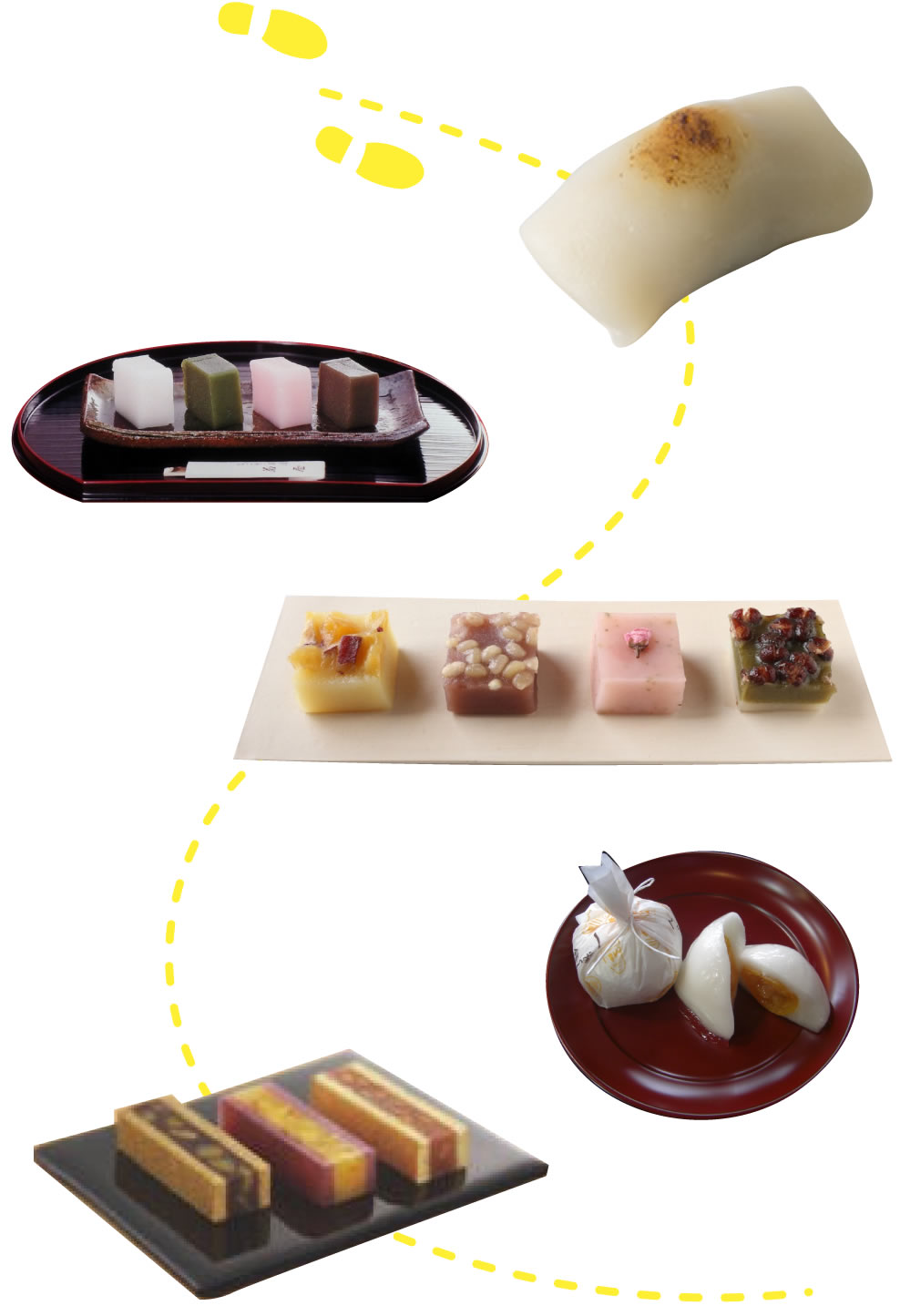
This year also features a Japanese confectionery tour of Nagoya that takes all kinds of places, from venerable establishments that have been doing business since feudal times to local shops that are the jewels of their neighborhood. When writer Minori Kai toured Nagoya sweet shops, she sensed there was more than meets the eye as she gauged the feelings of shop owners who make Japanese confectionery, explored the historical context and traditions prevailing in Nagoya, and witnessed the hand skills required.
Japanese confectionery shop walk navigator: Minori Kai
Writer: More than 30 books on discovering and introducing “kawaii things” and “good things.” Her articles in books and magazines have covered confectionery, miscellaneous goods, travel app bookmarking, local toys, local bread, souvenirs, classic architecture, and other topics. She also presides over Loule, an enterprise that carries out planning and events for miscellaneous goods.
- Period
- October 28 (Sat) to November 19 (Sun)
- Participating shops
- Aoyagi Sōhonke KITTE Nagoya shop, Ichida, Owari Nagoya Kameya Yoshihiro Honten, Kawaguchi-ya, Onkashi-tsukasa Kikyo-en, Onkashi-tsukasa Kiku-ya, Onkashi-tsukasa Kikuya Shigetomi, Owarigashi Kitagawa, Kiyome-mochi Sōhonke, Suzume-odori Sōhonten, Daikoku-ya Honten, Tsukuhane-ya, Nayabashi Manjū Banshōan Ōsubanshoji-dōri Shop, Bankaku Sōhonpo, Onkashi-tsukasa Furōen Masamitsu, Furōen Kakuōzan Shop, Mannen-dō, Murasakiya, Onkashi-tsukasa Mochikan, Mochibun Sōhonten & Honten, and Ryoguchiya Korekiyo Sakae Shop (total 21)
• Recipes and prices vary according to shop.
• At participating shops, you can get a stamp to count towards your Culture Tour Imprint Stamp Collection total.
• At participating shops, you can get a stamp to count towards your Culture Tour Imprint Stamp Collection total.
Nagoya Omokageza
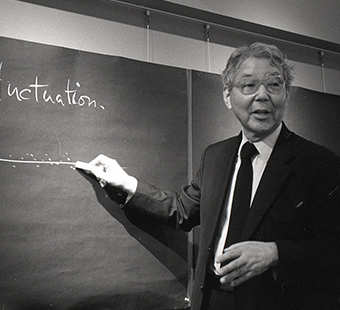
To continually imagine and re-imagine Nagoya studies, Nagoya Omokageza is a contemporary forum to gather knowledge from within and outside the city. It is a locus for discovering traces of former Nagoya, a place where they can be refashioned, resonate, and inspire the future. In this the third lecture, the topic has finally come round to cosmological traces. Fluctuating forms that return are the very stuff of space itself.
Third Lecture. Alice in Quantumland: the world we see is a trace
Between the world Alice dreamed and the real world. Is the visible world a trace? Lewis Carroll, the author of Alice's Adventures in Wonderland, was also a mathematician. Aspects of his story seem to anticipate quantum theory and a relativistic world view, neither of which had been established at the time of writing. In my lecture I wonder how it would be if the story’s main character Alice were revived in the present day and had learned quantum theory. It could be that she would encounter the essence of traces.
Haruo Saji
Theoretical physicist. Born Tokyo in 1935. Doctor of Science.
After pursuing studies at The University of Tokyo Institute for Solid State Physics, Matsushita Electric Tokyo Research Institute, University of Vienna, and elsewhere, among other posts, he has served as professor at Tamagawa University and at Miyagi University, and as head of Suzuka Junior College. At present, he is Honorary President of Suzuka Junior College. He is known for theoretical research on fluctuation and how it is implicated in the creation of space from nothing, and for exploration for extraterrestrial intelligence and civilization elsewhere in the universe. He is Chairman of The Space Poem Chain Compiling Committee at Japan Aerospace Exploration Agency (JAXA), a member of the Japanese Writers Association, visiting professor at Osaka College of Music, and head of the Misora Observatory in Hokkaido.
After pursuing studies at The University of Tokyo Institute for Solid State Physics, Matsushita Electric Tokyo Research Institute, University of Vienna, and elsewhere, among other posts, he has served as professor at Tamagawa University and at Miyagi University, and as head of Suzuka Junior College. At present, he is Honorary President of Suzuka Junior College. He is known for theoretical research on fluctuation and how it is implicated in the creation of space from nothing, and for exploration for extraterrestrial intelligence and civilization elsewhere in the universe. He is Chairman of The Space Poem Chain Compiling Committee at Japan Aerospace Exploration Agency (JAXA), a member of the Japanese Writers Association, visiting professor at Osaka College of Music, and head of the Misora Observatory in Hokkaido.
- When
- November 11 (Sat) 2:00 pm–5:00pm
- Where
- Lutheran Church of Omi Mission (2303 Tokugawa-chō, Higashi-ku, Nagoya)
- Cost
- 1,500 yen
- Event
production -
Vanki Coffee Roaster
Shingo Kojima - Cooperation
- Editorial Engineering Laboratory
- Speaker
- Haruo Saji
Nagoya, UNESCO City of Design and Collaborative Projects (1)
While preserving historic cultural heritage, bold city strategy connects past and present
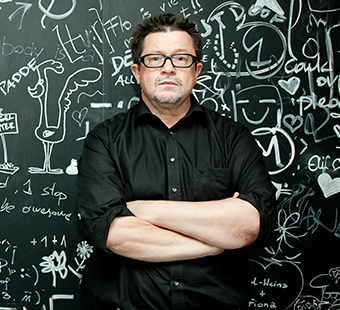
Karl Stocker
© Sabine Hoffmann
© Sabine Hoffmann

Eberhard Schrempf
© Philipp Podesser_Ausschnitt
© Philipp Podesser_Ausschnitt

Like Nagoya, Graz in Austria is a UNESCO City of Design. The City of Graz – Historic Center has been inscribed as a World Heritage Site. Both to protect its historic and cultural heritage and because, owing to the creation of powerful mechanisms to connect the past and the present, the city was selected as the European Capital of Culture. Currently, as a UNESCO City of Design, the city is increasing its creative value. What is the urban strategy of Graz?
Karl Stocker
Professor at FH Joanneum University of Applied Sciences, historian, PhD (history and European folklore studies). Since becoming a professor at Graz University in 1988, he has been Exhibition Director and Head of the Exhibition Design and Information Design Department at the University of Applied Sciences Graz. He founded the Bisdato Exhibition & Museum Design in 1990, and has been its director. He directs exhibitions at many other museums, and manages academic research projects. As ambassador of Graz UNESCO City of Design, he also cultivates interchanges with network cities.
Eberhard Schrempf
Since graduating, more than 30 years ago, from the University of Music and Performing Arts Graz, he has been working in the field of cultural management and design. Planning and managing the project, he was Marketing Director and Deputy Director of the European Capital of Culture project Graz 2003. In 2004, he established Culture Industries Austria. Among others, he was also tasked with the Development and Planning of Art Projects (25 PEACES) to mark the 50th anniversary of the Republic of Austria in 2005.
In 2007, he was appointed managing director of Creative Industries Styria, a Graz-based networking company working to increase the creative value and promote the creative economy of Styria (Graz is the capital of this federal state of Austria). In charge of the UNESCO City of Design project, he has also contributed to the development of Graz as a creative city.
- When
- November 3 (Fri & hol.) 2:00 pm–5:00 pm
- Where
- Creative Business Space Chord (4F Nadya Park Design Center, 3-18-1 Sakae, Naka-ku, Nagoya City)
- Cost
- 500 yen
- capacity
- 70
- Speakers
- Karl Stocker, Eberhard Schrempf
- Planning
- Nagoya, UNESCO City of Design Organizing Committee
Nagoya, UNESCO City of Design and Collaborative Projects (2)
My public at ground level: Creating town life starting with a hobby
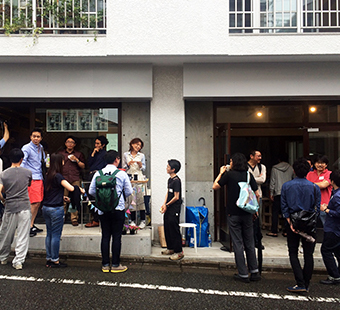
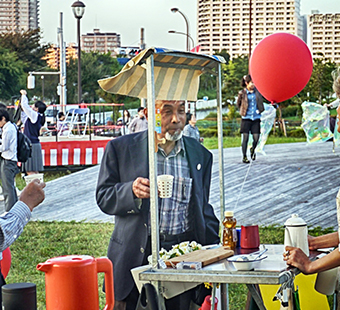

Even individuals can form the public! If all kinds of different people, young and old, male and female, could raise such awareness even a little in their work places and living spaces, it would provide opportunities for us to enjoy thinking about our town and where we live. Why don’t you try one of our workshops (with lecture) that are rolling out nationwide?
Ground Level
Inspired by the notion that “ground floor creation is town creation,” Ground Level is a consulting project aimed at attractively connecting the entire ground floor level, such as first floors of buildings, eave edges, unused places, public open spaces, sidewalks, and parks.
Among other nationwide activities, to raise questions again about town and community, the company has also been developing Personal Yatai (stall) activities so individuals can turn up and interact with their own stall. Wit Urban Camp we have been exploring a new model of tourism by enabling camping grounds to appear in towns and cities. Creative Unit mosaki, which predates Ground Level, aims to link specialized fields such as architecture and urban planning to the public, and it has been actively cultivating ideas in various media, such as books, journals, and web magazines, and promoting events since 2005. To increase awareness of surrounding space, in 2010, mosaki began spreading Kenchiku Taisō, or Architectural Gymnastics, which teaches people to mimic architectural forms with their bodies. This activity was honored with the AIJ (Architectural Institute of Japan) Prize for Education in 2013.
- When
- November 26 (Sun) 2:00 pm–5:00 pm
- Where
- Kawaitō family residence (Shikemichi, 1-36-12 Nagono, Nishi-ku, Nagoya City)
- Cost
- 500 yen
- capacity
- 30
- Speakers
- Ground Level Inc. / mosaki (Motoko Tanaka, Masaki Ōnishi)
- Planning
- Nagoya, UNESCO City of Design Organizing Committee
Tickets for:
Performance In The City, Traditional Performing Arts, Study In The City
(Tickets on sale Wednesday, September 7.)
Performance In The City, Traditional Performing Arts, Study In The City
(Tickets on sale Wednesday, September 7.)
Nagoya City Cultural Promotion Agency Ticket Guide
TEL: +81-52-249-9387 (weekdays 9 am-5 pm. or via mail)
• Tickets can be purchased at the 13 participating playhouse theatres city wide (except for the Mizuho Playhouse Theatre) including the Nagoya Civic Hall, Nagoya City Performing Arts Center, Cultur Foundation for Youth, Nagoya Noh Theater and other Nagoya City Cultural Center promotional agencies and facilities on weekends and holidays too.
• Tickets can be purchased at the 13 participating playhouse theatres city wide (except for the Mizuho Playhouse Theatre) including the Nagoya Civic Hall, Nagoya City Performing Arts Center, Cultur Foundation for Youth, Nagoya Noh Theater and other Nagoya City Cultural Center promotional agencies and facilities on weekends and holidays too.
Ticket PIA
TEL: +81-570-02-9999
• Circle-K Sankus, 7-Eleven direct sales
• Ticket PIA handling charges apply.
• Circle-K Sankus, 7-Eleven direct sales
• Ticket PIA handling charges apply.
Walking Tour Nagoya
Participation registration (applications open Wednesday September 7)
> Please register via the Yattokame Festival Home Page (24 hours)
> Please register via the Yattokame Festival Home Page (24 hours)
